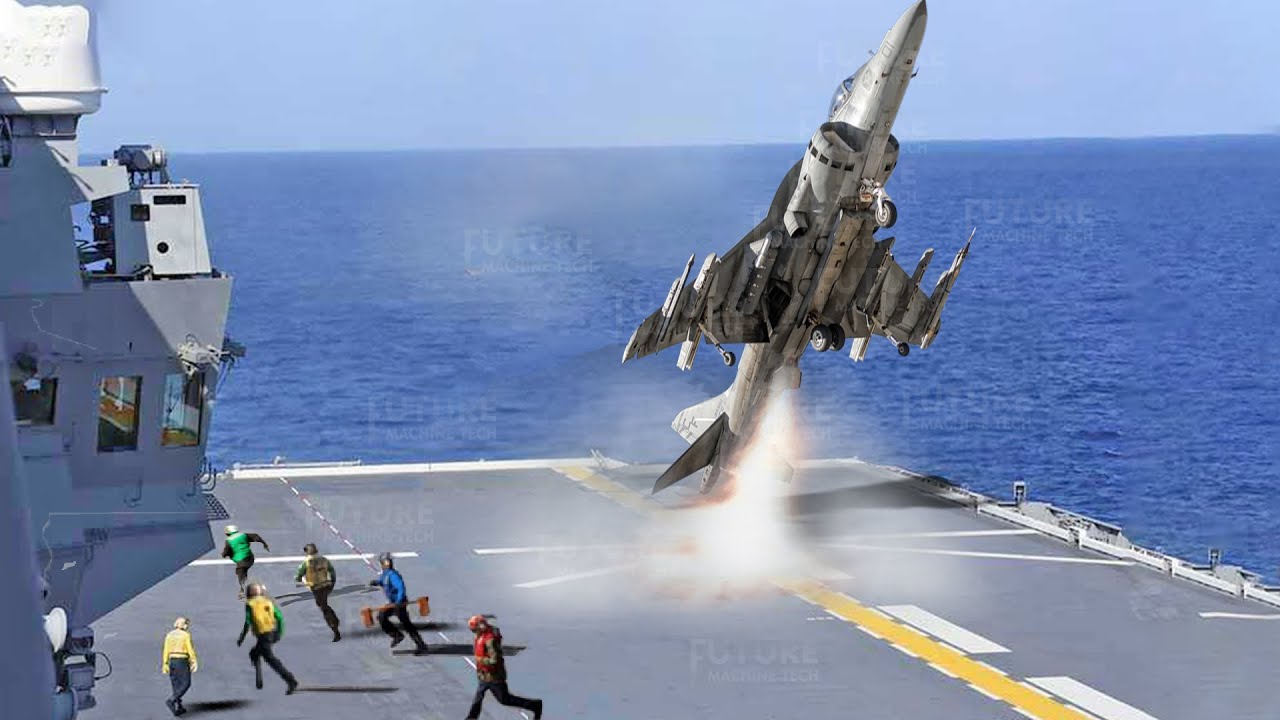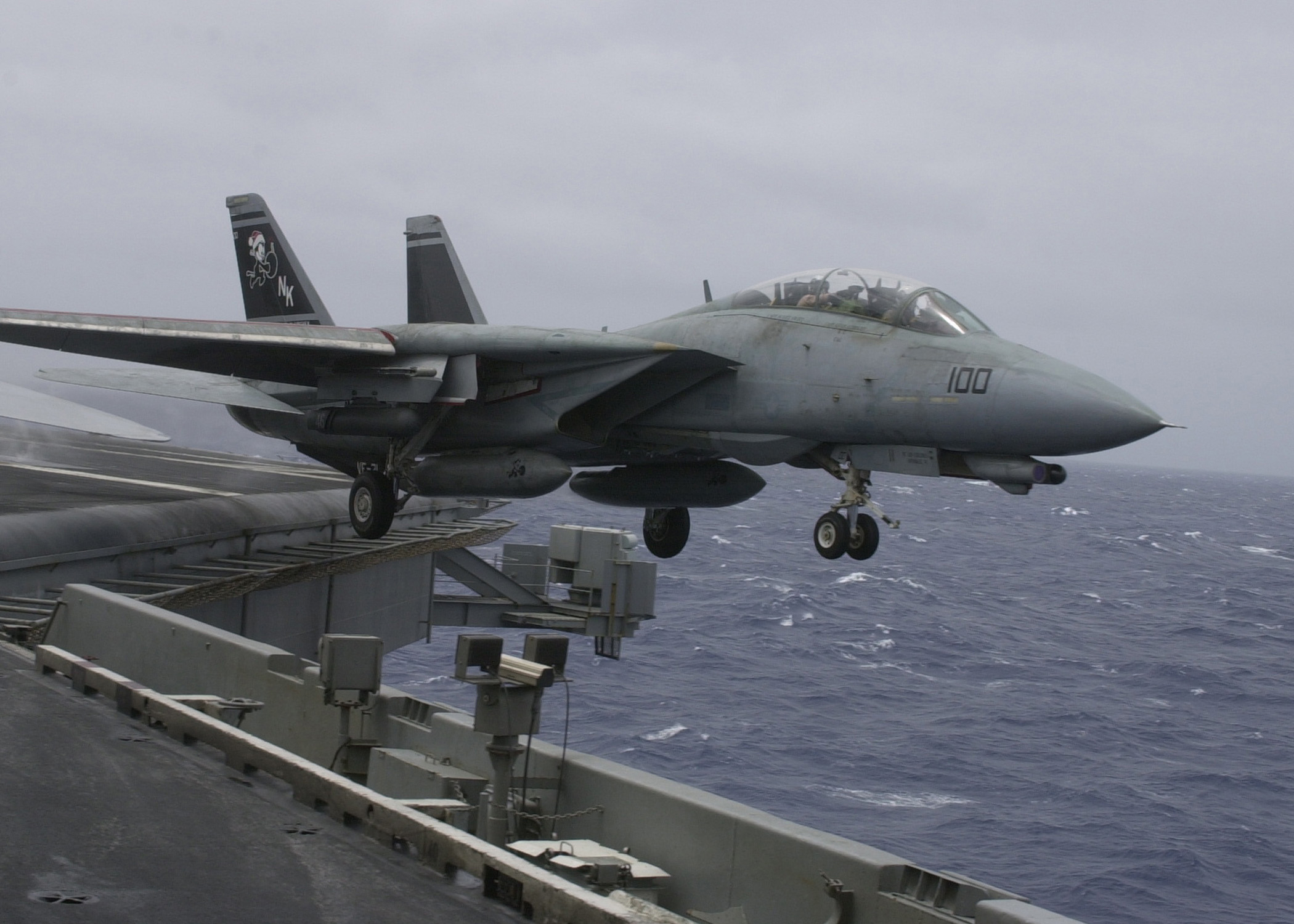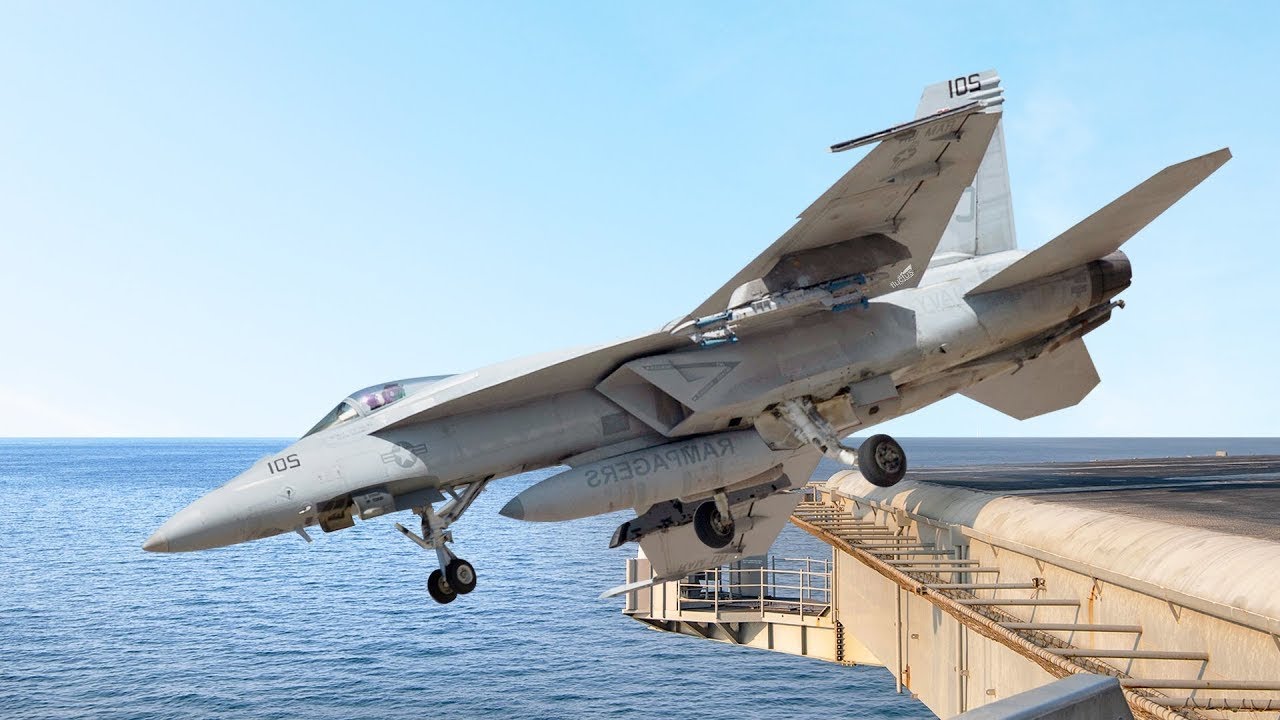In the high-stakes world of naval aviation, landing an aircraft on a moving aircraft carrier deck is an incredible feat of precision and skill. However, there are situations when pilots encounter unforeseen challenges that prevent them from successfully landing on a carrier. This article delves into the in-flight challenges that pilots can face and explores the procedures and options available when a successful carrier landing becomes impossible.

Carrier Landings: A Display of Precision
Landing a fighter jet or other aircraft on the compact deck of an aircraft carrier is a complex maneuver that demands precise timing, alignment, and control. Known as a “trap” or “arrested landing,” it involves catching one of the carrier’s arresting cables with a tailhook on the aircraft, which quickly decelerates the plane.
In-Flight Challenges:

Despite the extensive training and exceptional skills of naval aviators, there are situations where a successful carrier landing becomes uncertain. These in-flight challenges can include:
-
Missed Approach: A pilot may approach the carrier for a landing but miss the arresting cables or fail to engage them successfully, resulting in a missed trap.
-
Aircraft Malfunction: Technical issues or malfunctions on the aircraft can impact its ability to perform a successful landing. These issues may include problems with the landing gear, tailhook, or control surfaces.
-
Weather Conditions: Unpredictable and adverse weather conditions, such as severe turbulence or high winds, can make it difficult for pilots to maintain proper alignment and control during landing attempts.
-
Spatial Disorientation: In low-visibility situations, pilots may experience spatial disorientation, making it challenging to judge their approach accurately.
-
Fuel Considerations: In some cases, pilots may be low on fuel, limiting their options for landing attempts.
Emergency Procedures: What Happens Next?
When a pilot encounters one of these in-flight challenges and cannot make a carrier landing, a series of emergency procedures are initiated:
-
Bolter: If a pilot misses the arresting cables but still has sufficient fuel and a controllable aircraft, they may execute a “bolter” by applying full throttle and performing a go-around for another landing attempt.
-
Wave-Off: If the Landing Signal Officer (LSO) observes that the approach is unsafe, they may wave off the pilot, instructing them to abort the landing attempt.
-
Divert to an Alternative: In cases of fuel shortage or severe technical malfunctions, pilots are trained to divert to an alternative landing site, which may include another nearby carrier, a land-based airfield, or a designated divert location.
-
Ejection: In extreme situations, where a safe landing is impossible and the pilot’s life is at risk, they may be required to initiate ejection procedures to exit the aircraft and deploy a parachute for a safe descent and rescue.
Rescue and Recovery:
In the event of an ejection or ditching at sea, immediate rescue and recovery operations are launched. These operations are meticulously planned and executed to ensure the pilot’s safety and retrieval.
Conclusion:
In-flight challenges leading to unsuccessful carrier landings are a reality of naval aviation. However, the extensive training, advanced safety measures, and meticulous procedures in place are designed to mitigate these risks and ensure the safety of the pilots. The ability to adapt to unforeseen circumstances and make split-second decisions is a testament to the professionalism and skill of naval aviators, enabling them to navigate through in-flight challenges and return safely from their missions.




